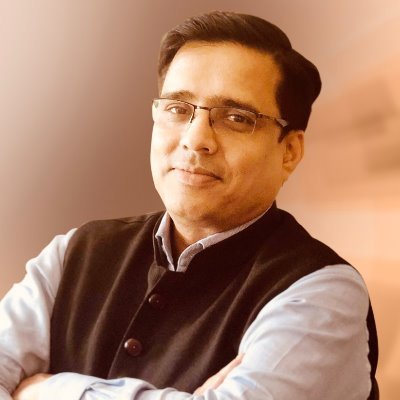
Enemies Within
By Vinit Goenka
“What India needs is not an analysis of all things that is wrong with the country but constructive solutions on how things could be improved, and its problems solved”
“Over the past few years, especially after the general elections of 2014, a narrative has been propagated” that, in India, “democracy is in danger”. These words from the prologue of the book Enemies Within (Author Vine publications) written by Vinit Goenka, who was the former national co-convenor of Information Technology Cell, BJP, provides an indication of the problem the author is trying to address. When considering books on narratives, especially by political figures, readership can broadly be categorised as ‘believers’ and ‘agnostics’. Both essentially live in an echo chamber where the intellectual transaction between the author and the reader is at best minimal. This book, however, is for a third category of reader: the patriot.
I define this patriot as someone who loves her nation and is concerned with the protection of its people and culture. But this aspiration is largely challenged either by the unavailability of facts or an inability to keep up with the fast-flowing nature of facts in the digital age. To such a citizenry, it is necessary to periodically present facts and analysis in a manner that allows easy comprehension of the problem. Goenka’s book is a commendable effort in this regard, published both in English and Hindi. The book is by no means a representation of a scholarly effort. But it is a product of rigorous open-source research; powered by the author’s personal experiences gained through extensive travel and newsroom participation. Hence, the book must be of interest to scholars, especially those dealing with national security.
Hijacking of Socio-economic Issues
The book is divided into sixteen chapters. The first two chapters are important in stating the problem and setting the context for the readers. In Goenka’s own words, the challenge that India faces is the “colonization of the Indian mind…through media, textbooks and social media”, and any attempts at reform that gets termed as “saffronisation of education”. This is a peculiar position for well-meaning Indians for they are damned if they do and damned if they don’t. A distorted version of Indian history has been fed over generations. Unable to realise that this version of history is not factual but borderline propaganda, Indians, especially Hindus, have found themselves with a siege mentality. Even a rudimentary realisation that the history is not representative of the entire Indian geography has not dawned on them. As a result, Indians have emerged as a set of people with the least security consciousness despite being overwhelmed by numerous internal and external threats. In the worst-case scenario, they are not just passive observers, but operate actively as “enemies within”.
Building on this statement of problem, the next fourteen chapters that follow are short essays providing the author’s perspectives on events that have transpired in the years after 2014. They examine the power of the media and intellectuals in creating fake narratives. The sole agenda, and outcome, of theses narratives has been to unite shenanigans of all sorts against the upper-caste Hindu. Goenka presents this expose by highlighting how genuine socio-economic issues are hijacked by left-liberals and Islamists to serve their own hidden agendas. In the third and fourth chapters, he emphasises the knavery of the left-wing intellectuals, Naxal leadership and the “professional” protestor in exploiting the economic faultlines to radicalise innocent citizens towards partaking in political violence. A certain kind of organised criminal structure has developed that inhibits growth and development in the Naxal affected regions whilst the proponents of violence have conveniently been filling their coffers. This has rendered the efforts of the Indian security forces meaningless as the attrition rates keep fluctuating; and, women and children are employed as human shields.
Misinformation feeds fear and Hinduphobia
In the subsequent essays, Goenka moves away from economics and observes how caste and religious differences are overplayed by the secularists leading to disastrous consequences. The Bhima Koregaon episode, the Shaheen Bhag protests, the violent incidents at the Jamia Milia Islamia University, the lynching incidents, etc. are some of the cases that find mention. Goenka provides a convincing argument and connects these incidents to the growing “Hinduphobia”. Although there is no conceptual elucidation in the book, it does become clear to the reader as the author engages certain content that has been circulating on social media. Citing prominent personalities, Goenka exposes how Islamist terrorist incidents are brushed aside with slogans of “terror has no religion” but every threat relating to lower caste Hindus – both real and perceived – are presented with an “upper caste Hindu” insignia. The polar-opposite responses elicited by renowned intellectuals to incidents of Hindu lynching versus Muslim lynching is also presented as a case in point.

Beyond instilling a feeling of guilt in the Hindu minds, there is also a concerted effort to view Hindu practices with disdain. This, Goenka establishes by highlighting the dual reactions by certain public intellectuals against overt display of Hindu practices. Whilst Defence Minister Rajnath Singh’s act of breaking a coconut was regarded an act of shame, US Vice-Presidential candidate Kamala Harris’ similar act was celebrated as a moment of pride! Such dualism and hypocrisy can be easily spotted and called out. However, the larger ramifications are felt in other greyer areas where it has a trickle-down effect. For instance, issues such as the Citizenship Amendment Act, Article 370 abolition, Direct Benefit Transfer (DBT) scheme require a certain degree of education (not literacy) to understand. More importantly, it requires confidence in being Indian/Hindu to defend them against critics. However, lacking these virtues, well-meaning Indians were left helpless when the left-leaning intellectuals misinterpreted these policies as divisive and threatening. The repeated electoral victories of the BJP clearly imply that the Indian voter is not convinced of their toxic interpretations. Yet, their short-term success in mobilising masses on the basis of fear indicates that Indians are indeed gullible and easy targets of misinformation. Goenka’s fourteen essays are a repeated reinforcement of this crucial point.
Missing Impact of Narratives
Notwithstanding the author’s admirable efforts, it is important to indicate certain areas where the book could find improvements. In pursuit of exposing the deceit of the secularists, Goenka, unfortunately, fails to highlight the strength of the Indian social fabric. For instance, while it is true that social media had become a platform for fear mongering, especially among Muslims, there were also numerous instances of Indian Muslims expressing their support to the CAA, which were also circulating on social media. Similarly, when Goenka talks about the denigration of the image of Indian armed forces and glorification of terrorists, he limits the expose to fake narratives peddled by India’s public intellectuals. It would have been beneficial for the reader to know how such narratives have actually had an impact on security operations.
Politicisation of terror had been a critical impediment to successful counterterrorist operations for several decades. The bogey of saffron terror and the political interference in ongoing counterterror operations and investigations prior to 2014 had imposed a huge burden on the security forces. The fact that terrorism has now been restricted to the Kashmir theatre alone despite the best efforts of the “enemies within” to radicalise Indian Muslims is testimony to the will of the present political dispensation, strength of the security and intelligence services as well as the faith invested by Indian Muslims in the federal government. These facts could have been employed to strengthen the argument of the book.
Book for Every Indian Voter
In spite of such minor gaps, Goenka’s book is an important contribution to the almost non-existent literature on India’s threats from within. In final thoughts, Goenka’s expose needs to be viewed comprehensively in connection with the hybrid threat posed by India’s north-western neighbour. The actions of the “enemies within” are the root causes of our national security threats, to which the Inter-Services Intelligence (ISI) only provides a supporting infrastructure. Our security forces have done a commendable job in targeting this sustaining factor. But the root cause can be addressed only by the Indian voter. For this, it is important that this book is read. Nevertheless, in addition to reading this book, as Goenka says, “what India needs [is] not an analysis of all things that [is] wrong with the country but constructive solutions on how things could be improved, and its problems solved.”
In my opinion, this burden can be shouldered by honest scholars, provided they are granted access to information by the government. Without this, the mythmakers and narrative setters will continue to have the last laugh while the average Indian continues to pay the price for it.
(The reviewer holds a PhD in Intelligence Studies from the University of Leicester, U.K. He tweets at @pc_dheeraj)
Book: Enemies Within, 2nd ed
Author: Vinit Goenka
Publishers: Author Vine
Price: INR 499.00
SW Ratings: ****
PhD in Intelligence Studies from the University of Leicester, U.K
